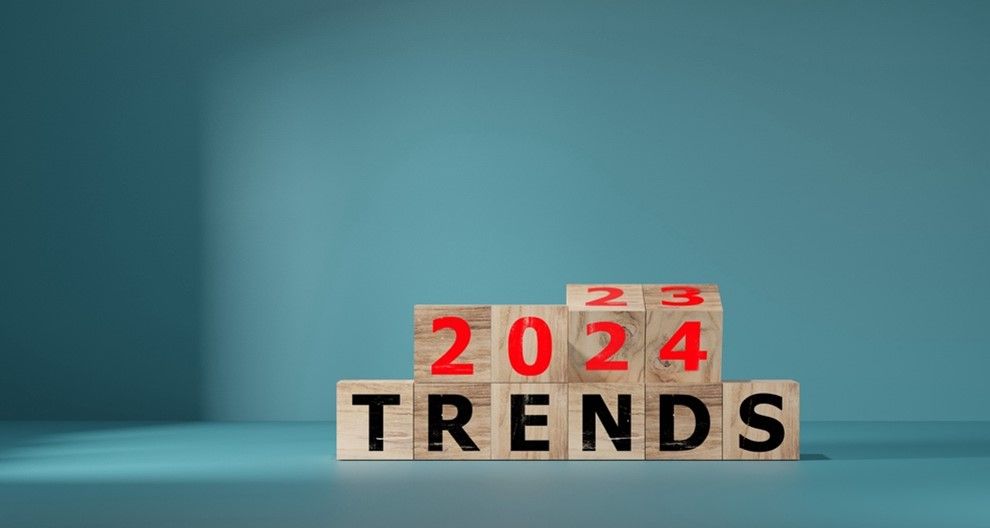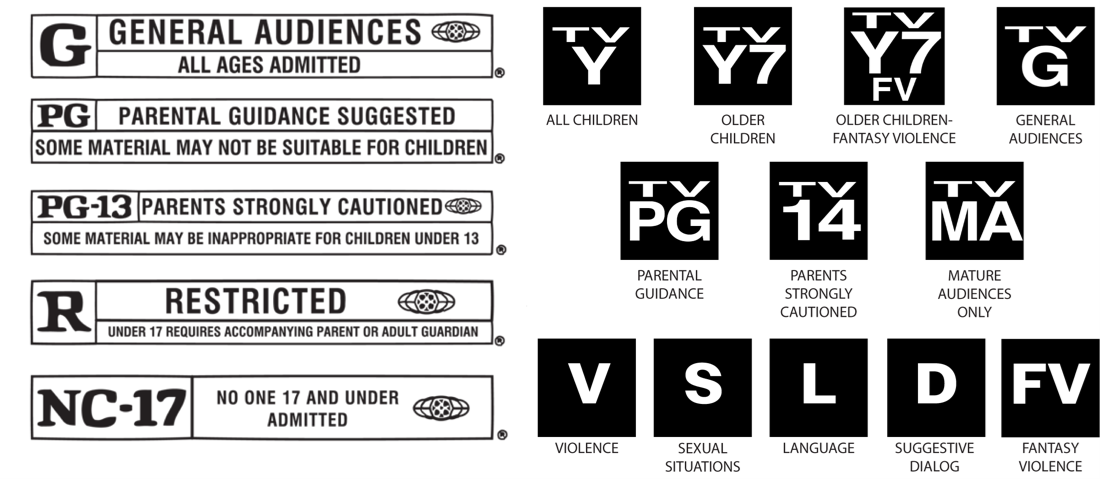What are TV and Streaming Platform Age Ratings?
Every time we turn on our television, and before any program begins, a box appears on our screens that contain the show’s age rating. Also known as parental guidelines, this rating may not matter much to kids, but it informs parents that what they watch may or may not be suitable for everyone.
In the U.S., there are currently seven (7) television ratings displayed on-screen. They are:
| TV Ratings | Movie Ratings |
|---|---|
| TV-Y (All Children) | |
| TV-Y7 (Children 7+) | |
| TV-Y7 FV (7+ with Fantasy Violence) | |
| TV-G (General Audience) | G (General Audiences) |
| PG (Parental Guidance Suggested) | PG (Parental Guidance Suggested) |
| TV-14 (Parents Strongly Cautioned) | PG-13 (Parents Strongly Cautioned) |
| TV-MA (Mature Audiences Only) | R (Restricted) |
| NC-17 (Adult Content) |
Comparing TV age ratings to movie ratings, three things stand out. First, there is a general overlap between the primary TV and movie ratings. This is done primarily to avoid confusion. Second, there are more types of TV programs being developed for young children than there are films, so the industry created three additional ratings to better inform parents of content within those shows they may choose to restrict from their children’s viewing. Thirdly and conversely, there is no TV rating for purely adult content, because such content is not specifically developed or available on TV. Such content is available, but only from age-restricted subscription services or pay-per-view.
When notices appear on-screen can vary. If the show is longer than one hour, then the rating icon--if it appears at all--will reappear at the bottom or top of the hour. Some channels display the rating icon after each commercial break, but not all do.
But what about streaming platforms?
All content needs to be rated no matter its platform. Streaming platforms have generally adopted both TV and movie ratings methodologies in the US. The difference is streaming services are more willing to label content “unrated” if no “official” rating has been obtained or if the producer or distributor of the content has not “self-rated” it. TV content such as news, sports, religious, paid advertising and home shopping programs are not required to have ratings, and therefore do not display one.
Age ratings do have an impact on audience. If parents don’t see an episodic or film rating at-a-glance, then they won’t know if they should let their kids watch it. In film, a movie with an “R” rating will have fewer viewers than a “PG-13 rated film.” Smaller audiences mean fewer ticket sales, which mean less revenue. If that happens in TV, lower-rated shows lose out on additional views, which means lower share ratings and the show may not get renewed or ever be rebroadcast. On streaming platforms, an “Unrated” show may be ignored by search algorithms, again missing out on any ability to find an audience.
Streamers offer additional tools parents can use to define and limit the types of content their children can watch. Disney+, Netflix, Hulu, Prime Video and others offer parental controls and even kid’s profiles for just this purpose and some make sure the kids stay safe. For example, Disney+ offers a “Kid-Proof” feature that prohibits them from leaving their profile without passing a test. These parental options have not yet made their way to linear TV services.

Source: soda.com
Recommendations for Improving the System
Some organizations are calling for a more uniform approach to ratings. The Catholic News reported last month (September 2021) the TV Parental Guidelines Board’s (PGB) recommended guidelines for streaming services—and how they “can and should adopt age-based ratings and applicable descriptors.” They suggest that, like most television shows, streaming providers should display rating when consumers scroll through their viewing options. The PGB also said that these ratings should be displayed across all viewing platforms: television and online. So, whether we’re watching snippets of “Bridgerton” on YouTube or Netflix, the ratings should display the same unless heavily edited to meet a “G” rating.
Tim Winter, the president of the Parents Television Council, insisted the new guidelines would be a positive, if small, step to fixing some of the “widespread inconsistencies in how programs are rated,” specifically on streaming platforms.
Other countries have already taken action to limit the amount of violent material that could frighten young children, among other things. According to the Center for Media Literacy, more productive ratings systems “pay attention to developmental age differences” between children age groups and aim to address viewers at home and in theaters.
Sweden, Spain, Norway, Germany, and Denmark all have a ratings system that considers the type and intensity of violent material shown. Based on those factors, their ratings classifications “either warn parents about violent material or restrict theater access” for younger children. Spain is also one of several countries that have developed specific classifications for televised content. Other countries include Australia, Chile, France, Hungary, Ireland, Italy, Malaysia, Maldives, New Zealand, Peru, the Philippines, Poland, Portugal, Romania, Thailand, Turkey, and Venezuela. Conversely, other countries such as South Africa, the Netherlands, Mexico, Brazil, and Argentina have adapted film ratings for television. This is separate from the United States, which has independent ratings systems for television and film.
TV and movie rating systems exist as tools consumers can use to learn about the appropriateness of content for their families. Given the concern being raised by parents that with so many titles becoming available on TV and on streaming platforms, how, where and when age ratings are available is more important than ever before.
Related Posts


SILICON VALLEY
2336-H Walsh Ave.
Santa Clara, CA 95051
+1(408) 550-2344
LOS ANGELES
3900 W Alameda Ave.
Burbank, CA 91505
+1(310) 496-7307








